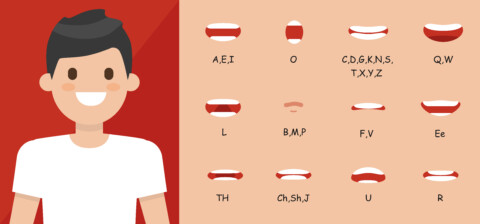Last week, I shared several reasons why listening to English can be difficult for non-native speakers. Despite these challenges, listening is not often the focus of lessons. Teachers assume students’ listening skills will develop naturally, and although this is somewhat true, there are things teachers can do to support the process. One option is to create listening-focused lessons.
A Listening Lesson
A listening-focused lesson begins with one or two listening objectives. If you teach in a state that is part of the WIDA consortium, your English learners will have ACCESS scores for listening. These scores—paired with the Can-Do Descriptors—can provide guidance for developing appropriate listening lesson objectives.
Using a media clip as the text for a listening lesson allows you to replay the same content multiple times. You could also read aloud a written script, but this could be confusing to students if you don’t read it the same way each time. Additionally, if you are reading the script, you cannot be listening along with the students.
Preparation
Choose a media piece that would interest your students. It might be related to their everyday life (on the playground or in the grocery store) or an academic topic (differences between mammals and birds).
Cycle One
Viewing: Watch the media clip without the sound. This gives students the opportunity to understand the context of the clip and begin to recall appropriate background information.
Processing: Ask students, with partners or the whole group, to share what they think the video is about.
Cycle Two
Viewing: Ask the students to listen for the gist of the clip with the sound on.
Processing: Allow students time to discuss the clip with a partner. Then, ask questions that require students to recall factual information. If they have difficulty answering the questions or understanding the overall meaning of the clip, let them watch it again.
Cycle Three
Viewing: While students listen again, ask them to complete a cloze dictation page you have provided them. Select the most important elements of the clip and transcribe those sentences verbatim to be included in the cloze activity. Remove key words from these sentences that students will fill in as they listen. (Repeat as needed.)
Processing: Allow students to discuss their cloze activity responses with a partner. Clarify any misunderstandings from the video clip.
Depending upon the video chosen, you may be able to extend the lesson by asking students to listen for different things. For example, ask them to determine how a particular character felt during the video.
They may need to watch it again and then lead them to explain how they know the character’s feelings. What did the character say? What tone of voice did they use? Help them interpret any cultural information that affects the meaning of what characters said.
Why aren’t they listening?
Chances are that students will pay attention during a listening-focused lesson. They realize the point of the lesson is to listen. However, in other lessons throughout the day, students often tune out. One reason may be that they are simply tired of listening in English. It can be exhausting to listen attentively for multiple hours a day, particularly for a learner at the intermediate level or below.
Other times, students don’t listen because we don’t give them a reason to listen. Just as round-robin reading leads students to count the paragraphs until it’s their turn and then spend time prepping their oral reading, many lessons allow English learners to ignore what others are saying while they prepare their question or oral response to the lesson’s content. Still others simply sit while their peers answer the teacher’s questions because they know they won’t be called upon.
Strategies to Implement
One technique to combat this non-listening stance is to challenge students to repeat what another student has shared.
For example, if Juan responds to my question, I may ask Lydia to summarize what Juan has said. Then, I can ask Danielle if Lydia was correct. With this technique, it won’t take long for students to realize they need to listen not only to the teacher, but also to what their classmates are saying.
Another time, I may ask Han to respond to Cathy’s comment. Does he agree or disagree with her? Why? These strategies help students learn how to respond to others as part of an academic dialogue. Their skills will be useful in both large and small group discussions.
Most teachers know that we should give students a purpose for listening when watching a video or hearing a story. However, we don’t always do it. Listening purposes help English learners focus their listening. It helps them to develop skills of choosing the most important pieces of information in what they hear. When there’s so much to listen to, they often need guidance in knowing what is important.
You can do this by asking them to listen for a character’s tone of voice, or the three steps in a process, particular key vocabulary words, or grammatical or sentence structures. By integrating a listening focus into a video clip shown for a content lesson, you can address both language (listening) and content objectives (science, for example).
Most English learners want to listen. They want to understand what you and their peers are saying during class. Structuring some lessons to focus explicitly on listening and integrating listening requirements in other lessons helps to guide and challenge students as they develop these important skills.






